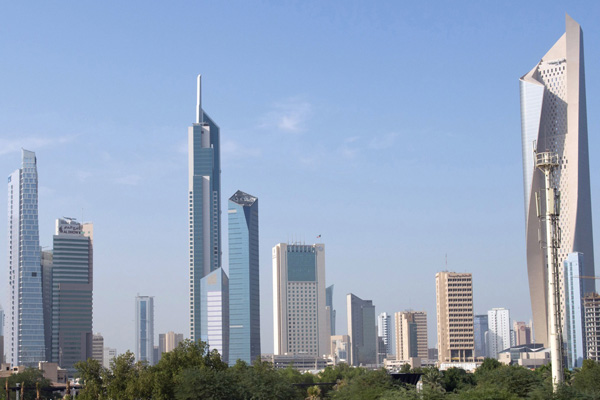
Kuwait spending picks up despite oil price fall
KUWAIT, September 21, 2015
Kuwait’s government spending in August stood at KD4.2 billion ($13.91 billion) fiscal-year-to-date (fytd), marking 22 per cent of the FY15/16 budget, slightly above the historic average of 14 per cent, a report said.
The figure, while being 6 per cent lower than during the same period last year, indicates that spending cuts have not yet been fully reflected in the interim figures, added the latest Economic Update from the National Bank of Kuwait (NBK).
The interim public finance figures for the first five months of fiscal year 2015/16 (FY15/16) point to a relative slowdown in total government spending five months into the fiscal year. The slowdown was driven by a slight dip in current spending, while capital spending saw a rise.
Revenues were down due to the sustained drop in oil prices from a year ago. The government recorded a preliminary surplus of KD3.1 billion during the period.
Current spending continues to constitute the bulk of total spending, which came in at KD3.8 billion fytd. Current spending is driven mainly by the ‘miscellaneous expenditures & transfers’ segment, which includes military salaries and transfers to the social security fund.
Miscellaneous & transfers came at KD2.2 billion fytd, down 13 per cent year-on-year (y/y); goods & services were at KD0.2 billion fytd, down by 43 per cent y/y. Wages & salaries stood at KD1.3 billion fytd, up 8 per cent y/y mostly due to basis effects.
Capital spending was at KD0.4 billion fytd in August, up an impressive 35 per cent y/y. It currently stands at 19 per cent of the full-year budget, six percentage points above the five-year average. This reflects the government’s commitment to its strategic developmental projects. Spending on transportation & equipment reached KD 56 million compared to only KD 8 million for the same period last year. Similarly, spending on projects, maintenance & land purchases, was up a strong 21 per cent y/y.
Total government revenues were KD7.3 billion in the five months to August, down 42 per cent y/y. At 60 per cent of the full-year budget, this is markedly lower than the historic average of 80 per cent for the five month period. Both oil and non-oil revenues witnessed significant declines; recording drops of 42 per cent y/y each, respectively, said the NBK report.
Oil revenues were almost cut by half on the backdrop of lower crude oil prices and slightly lower oil production. The Kuwait export crude (KEC) price averaged $45.3 per in August of this year. While oil prices are expected to average slightly higher at $55 per barrel in 2015 and 2016, Kuwait’s oil production is at a two-and-a half year low due to a halt in production from two oil fields in the Neutral Zone over an operational dispute with Saudi Arabia.
Similarly, non-oil revenues were down on lower miscellaneous revenues & fees, which make up a bulk of non-oil revenues. Non-oil revenues fytd stand at 31 per cent of the full-year budget, compared to a five-year average of 53 per cent.
The government plans to introduce several reforms that should boost non-oil revenues and reduce reliance on oil resources, though impact on the current fiscal year will be limited. Petrol subsidies reform could be introduced in the coming months, though it will be phased in over several years.
According to NBK, legislation for a 10 per cent corporate income tax could be passed by mid-2016, with implementation not expected before another year. This tax will replace the current tax on foreign companies, as well as the zakat, labour support and KFAS taxes, and it could generate up to KD1 billion in revenues. Kuwait also plans to introduce a value added tax (VAT) though this awaits a GCC-wide decision.
The interim budget surplus, at KD 3.1 billion, was the smallest in a decade as revenues came in lower than expected and the spending rate remained high compared to the same period last year. The surplus is expected to turn into a deficit of KD 2.1 billion by the end of FY15/16, or 5.5 per cent of GDP. Total government spending is projected to decline by 15 per cent in FY15/16 while revenues are seen declining by 35 per cent. – TradeArabia News Service







